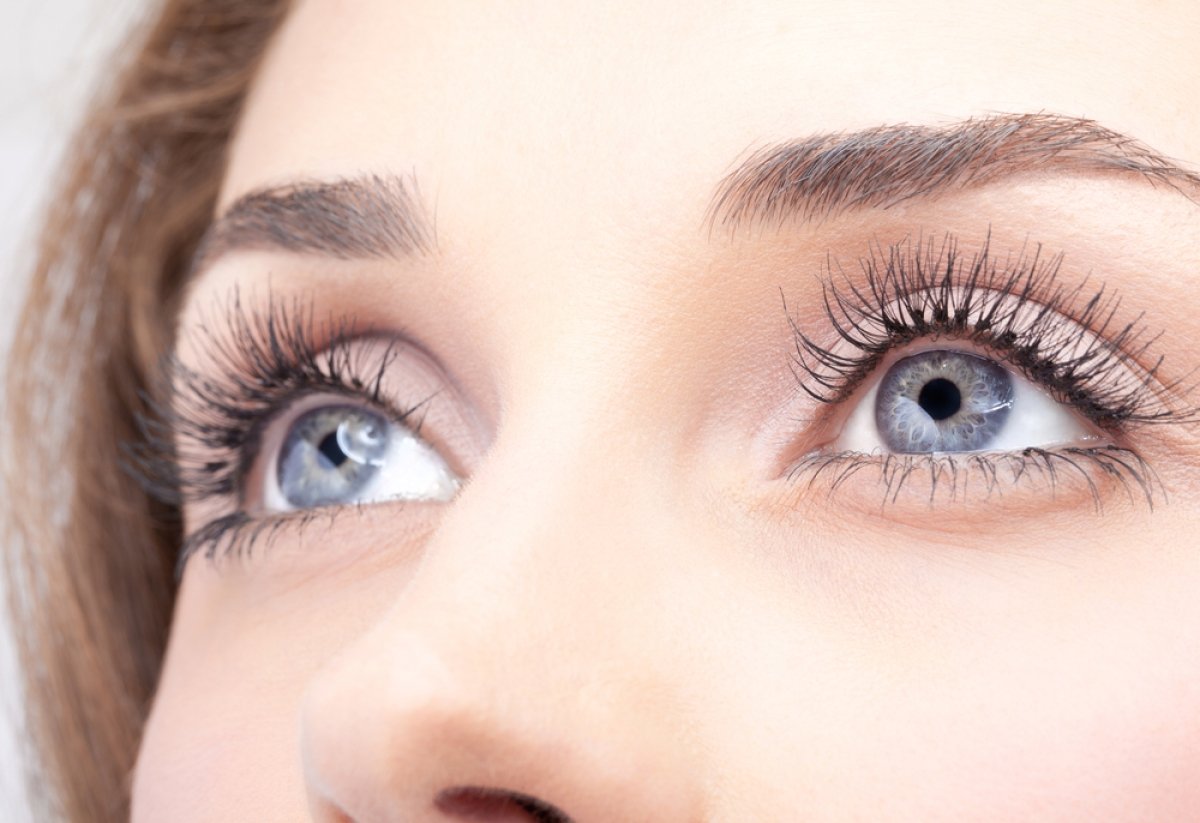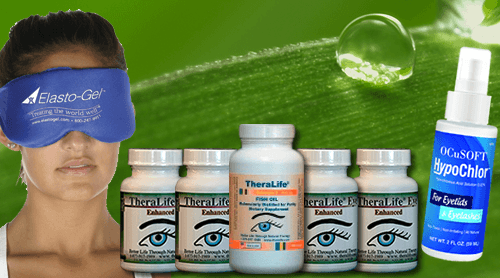TheraLife's products provide significant benefits for individuals managing chronic blepharitis. Their approach emphasizes the importance of daily eyelid hygiene and warm compresses to alleviate symptoms by clearing debris and unclogging oil glands. TheraLife also promotes an anti-inflammatory diet rich in omega-3s to support overall eye health. Proper sleep hygiene is encouraged to enhance these efforts. Additionally, their range of clinically tested over-the-counter supplements and eye drops offers relief, particularly for those with dry eyes or related conditions like rosacea. In more severe cases, prescription treatments might be necessary, and TheraLife provides guidance on advanced interventions such as laser therapy.
TheraLife's comprehensive strategies emphasize natural and effective long-term management of eye conditions. They offer insights into dealing with blepharitis while also addressing related issues like dry eyes, Sjogren's syndrome, and uveitis with a combination of lifestyle changes and targeted products. Their solutions are designed to improve eye health holistically, providing customers with lasting comfort and relief from chronic conditions.
Key Takeaways
- Consistent daily eyelid hygiene with specialized cleansers reduces blepharitis severity and prevents flare-ups.
- Regular warm compresses and gentle lid massages improve gland function and alleviate symptoms.
- Incorporate omega-3 fatty acids and anti-inflammatory foods to support eye health and reduce inflammation.
- Use lubricating eye drops and antibacterial ointments for dryness relief and bacterial control.
- Consult eye care professionals for tailored treatments and consider advanced interventions for persistent symptoms.
Understanding the Causes of Chronic Blepharitis
Although chronic blepharitis may seem like a simple annoyance, understanding its causes is vital for effective management.
You're dealing with an inflammation of the eyelid margins, often triggered by several factors. Blepharitis triggers include bacterial infections, seborrheic dermatitis, and meibomian gland dysfunction.
Environmental factors also play a significant role. Exposure to dust, pollen, and smoke can exacerbate symptoms, leading to discomfort and potential complications.
It's essential to identify these triggers to tailor a management plan suited to your specific condition. Daily eyelid hygiene is crucial for symptom management and can significantly reduce the severity of blepharitis.
By understanding the interplay between these elements, you can effectively minimize flare-ups.
This knowledge empowers you to mitigate the impact of blepharitis and maintain ocular health, enhancing your quality of life despite this chronic condition.
Implementing Effective Eyelid Hygiene Practices
To manage chronic blepharitis effectively, you should establish a consistent daily cleansing routine. Utilizing warm compresses can help loosen debris and improve gland function, while precise lid scrub techniques will guarantee thorough removal of irritants. Consistent use of Omega-3 fatty acids can provide anti-inflammatory benefits and support symptom improvement over time.
Daily Cleansing Routine
Adopting a consistent daily cleansing routine is crucial for managing chronic blepharitis effectively. You should cleanse your eyelids twice a day, maintaining a suitable cleaning frequency to prevent debris accumulation and inflammation. Choose products specifically designed for eyelid hygiene, such as lid scrubs or gentle cleansers, which are less likely to irritate sensitive skin. Avoid using regular facial or body soaps, as they may exacerbate symptoms. Apply a small amount of your selected product to a clean cotton pad or swab, and gently clean along the lash line. Confirm that you rinse thoroughly with warm water to remove any residue. Consistency with this routine will help maintain eyelid health and reduce the frequency of blepharitis flare-ups. Consider using an all-natural eye wash that contains pure hypochlorous acid for daily eyelid and eyelash cleansing, which acts as a natural defense mechanism against pathogens.
Warm Compress Benefits
Maintaining eyelid health extends beyond cleansing; incorporating warm compresses into your routine can greatly alleviate chronic blepharitis symptoms. By applying a warm compress, you enhance meibomian gland function, reducing inflammation and improving lipid flow. Effective warm compress techniques involve using a clean, damp cloth heated to a tolerable temperature. Apply it gently over closed eyelids for 5-10 minutes. This process should be repeated twice daily for optimum results. Consistent warm compress frequency is essential in loosening crusts and promoting ocular comfort. Confirm the cloth maintains its warmth throughout the application by reheating if necessary. With regular use, warm compresses can notably reduce eyelid irritation and dryness, contributing to sustained relief from blepharitis symptoms. For individuals with chronic dry eyes, addressing underlying conditions can further enhance the effectiveness of warm compresses and promote long-term ocular health.
Lid Scrub Techniques
Harness the power of effective eyelid hygiene by implementing precise lid scrub techniques.
To manage chronic blepharitis, utilize specialized lid scrub tools designed for gentle yet thorough cleansing. A clean cotton swab or a soft eyelid scrub pad can effectively remove debris and reduce inflammation.
Incorporate a cleansing frequency that aligns with your symptoms; typically, twice daily scrubs are recommended for ideal results. Use a non-irritating cleansing solution, ensuring it's suitable for ocular use.
Apply the solution to the lid scrub tool, and gently cleanse the eyelid margin, focusing on the lash line where bacteria and debris accumulate.
Regular eyelid hygiene practices can significantly help in controlling blepharitis symptoms and prevent recurrences.
This routine not only maintains eyelid health but also minimizes symptom flare-ups, providing lasting relief and comfort in managing chronic blepharitis.
Exploring Dietary Adjustments for Eye Health
You should consider incorporating anti-inflammatory food choices into your diet, as these can reduce the symptoms of chronic blepharitis by minimizing inflammation. Prioritize foods rich in omega-3 fatty acids, such as fish and flaxseeds, and guarantee adequate intake of vitamins A, C, and E, known for their benefits to eye health. Additionally, selenium-rich foods can support immune health and further reduce inflammation, contributing to overall eye comfort.
Anti-Inflammatory Food Choices
Although often overlooked, adjusting your diet to include anti-inflammatory foods can greatly contribute to managing chronic blepharitis.
Integrating anti-inflammatory spices like turmeric and ginger into your meals can help reduce inflammation, potentially alleviating blepharitis symptoms. These spices contain bioactive compounds known to inhibit inflammatory pathways.
Additionally, increasing your intake of omega-3 sources such as flaxseeds, walnuts, and fatty fish like salmon can further support ocular health. Omega-3 fatty acids possess anti-inflammatory properties that may help stabilize tear film and reduce eyelid inflammation.
It's important to note that maintaining proper tear film balance is crucial for overall eye health, as it prevents dry eye conditions and supports clear vision.
Vitamins for Eye Health
When contemplating dietary adjustments for eye health, incorporating essential vitamins can greatly impact your ocular well-being.
Vitamin supplementation guarantees you're receiving key nutrients that mightn't be adequately obtained from diet alone, optimizing nutrient absorption critical for eye maintenance.
Here are essential vitamins to ponder:
- Vitamin A: Supports corneal health and night vision, reducing the risk of night blindness.
- Vitamin C: An antioxidant that may lower the risk of cataracts and slow age-related macular degeneration.
- Vitamin E: Protects eye cells from free radical damage, promoting overall eye health.
- B Vitamins: Particularly B6, B9, and B12, they may reduce the risk of age-related eye diseases.
Incorporating these vitamins into your daily regimen can profoundly benefit your vision and comfort in the long-term. Additionally, consuming omega-3 fatty acids found in oily fish and flaxseeds can help prevent dry eyes, supporting overall eye health.
Utilizing Warm Compresses and Lid Massages
Applying warm compresses and performing lid massages are effective techniques in managing chronic blepharitis.
To begin, select a clean, soft cloth, and immerse it in warm water. Make sure the temperature is comfortable yet sufficiently warm to enhance circulation.
Utilize warm compress techniques by placing the cloth over your closed eyelids for 5-10 minutes, reheating as necessary. This process softens debris and unblocks oil glands.
Follow up with effective lid massages by using your fingertips to gently massage the eyelids in a circular motion. This action aids in expressing clogged glandular secretions, promoting better oil flow.
Regular implementation of these strategies can greatly reduce inflammation and discomfort, providing relief in chronic blepharitis management.
Maintain consistency for best outcomes.
Avenova is an FDA-approved specialized eyelid cleanser that effectively reduces bacteria, offering additional support in managing blepharitis.
Choosing the Right Over-the-Counter Products
Selecting the right over-the-counter products is essential for effectively managing chronic blepharitis. These products help target symptoms like inflammation, redness, and irritation. When evaluating over-the-counter options, you should prioritize product effectiveness and safety. Reflect on products that have been clinically tested and are widely endorsed by eye care professionals.
Here are some over-the-counter options to reflect on:
- Eyelid Cleansers: These help remove debris and maintain eyelid hygiene.
- Lubricating Eye Drops: Alleviate dryness and provide soothing relief.
- Antibacterial Ointments: Reduce bacterial load on eyelid margins.
- Hypoallergenic Makeup Removers: Prevent irritation from residual makeup.
Consider using TheraLife Eye capsules for restoring tear secretion and relieving dry eyes, as they have been clinically proven effective for 80% of first-time users. Choose products with minimal preservatives and allergens to reduce the risk of exacerbating symptoms.
Always follow the manufacturer's instructions for best results and consult an eye care professional if symptoms persist.
Considering Prescription Treatments and Medications
Although over-the-counter products can be beneficial for managing chronic blepharitis, prescription treatments and medications may be necessary for more severe cases.
Prescription options often include topical steroids and antibiotic ointments to target inflammation and bacterial infection directly. Topical steroids reduce eyelid inflammation and swelling, providing rapid relief. However, their use should be monitored closely to avoid potential side effects like increased intraocular pressure.
Antibiotic ointments, such as erythromycin or bacitracin, are effective against bacterial overgrowth contributing to blepharitis symptoms. These ointments are typically applied to the eyelid margin, ensuring precise delivery to affected areas.
It's crucial to follow your healthcare provider's instructions for these medications to achieve ideal results while minimizing risks. Always consult a specialist for tailored treatment advice.
Exploring Advanced Medical Interventions
For cases of chronic blepharitis where conventional treatments prove inadequate, exploring advanced medical interventions becomes necessary.
You might consider innovative therapies designed to target the underlying causes of inflammation and discomfort. Laser therapy, for instance, offers a precise mechanism to alleviate symptoms by targeting affected tissues with minimal invasiveness.
Additionally, immunomodulatory agents present a promising avenue by adjusting the immune response to reduce chronic inflammation.
When considering these advanced options, evaluate:
- Efficacy: How effective is the intervention in long-term symptom relief?
- Safety: Are there any potential risks or side effects associated with the treatment?
- Cost: What're the financial implications, and is it covered by insurance?
- Availability: Is the treatment widely accessible in your area?
These interventions can greatly enhance your management strategy.
Integrating Lifestyle Changes for Better Management
When managing chronic blepharitis, integrating lifestyle changes can be a pivotal component of your overall treatment plan. Start by implementing stress management techniques to mitigate flare-ups. Stress can exacerbate symptoms, so techniques like mindfulness or controlled breathing can stabilize your condition.
Equally important is maintaining proper sleep hygiene. Guarantee you're getting adequate, restorative sleep by establishing a consistent sleep schedule and creating a relaxing pre-sleep routine. Poor sleep can weaken your immune system, potentially aggravating blepharitis.
Additionally, consider dietary adjustments to reduce inflammation, such as increasing omega-3 fatty acids. Regular eyelid hygiene practices, like warm compresses and lid scrubs, should complement these lifestyle changes.
Frequently Asked Questions
Can Chronic Blepharitis Affect Vision Over Time?
Yes, chronic blepharitis can affect your vision over time. Persistent inflammation may lead to vision impairment due to corneal damage or irregularities.
Long-term effects include blurred vision and increased risk of dry eye syndrome. Such conditions can exacerbate visual disturbances if left untreated.
It's vital to manage blepharitis effectively to prevent these complications and maintain ideal eye health. Regular monitoring by an eye care professional is essential for minimizing risk.
Are There Any Natural Remedies for Chronic Blepharitis?
Imagine the soothing warmth of a herbal compress gently enveloping your eyelids.
Yes, there are natural remedies for chronic blepharitis. Using warm compresses can help melt away the stubborn oils and debris that accumulate along your eyelid margins.
Herbal compresses, infused with anti-inflammatory herbs like chamomile or calendula, might offer additional relief.
Consistently applying these methods can help maintain cleanliness and comfort, potentially reducing irritation and flare-ups over time.
How Can Stress Impact Chronic Blepharitis Symptoms?
Stress can exacerbate chronic blepharitis symptoms by disrupting your body's immune response, leading to increased inflammation.
Effective stress management is essential to maintain your emotional health, which in turn can help stabilize symptoms. Techniques like mindfulness, regular exercise, and adequate rest can mitigate stress.
Is Chronic Blepharitis Related to Other Eye Conditions?
You might wonder if chronic blepharitis is related to other eye conditions. Indeed, it can be linked to conditions like dry eye syndrome and rosacea.
To manage this, prioritize eyelid hygiene and inflammation management. Regularly clean your eyelids with a gentle cleanser to reduce bacterial buildup.
Control inflammation by using prescribed medications or warm compresses. These steps can help alleviate symptoms and prevent complications associated with other eye issues.
Can Environmental Factors Worsen Chronic Blepharitis?
Did you know that 60% of urban dwellers report worsened blepharitis symptoms due to pollution effects?
Environmental factors like air quality and humidity levels can indeed exacerbate chronic blepharitis. Polluted air irritates your eyes, while low humidity causes dryness, intensifying discomfort.
Regular exposure to such conditions challenges your eye's natural defenses, making symptom management essential. Adjusting your environment or using protective eyewear might help mitigate these effects and improve your comfort.
Conclusion
TheraLife.com offers a comprehensive range of products and strategies that significantly benefit customers dealing with chronic blepharitis and related eye conditions. By focusing on natural and holistic approaches, TheraLife provides solutions that integrate seamlessly into daily routines, enhancing both immediate and long-term eye health.
TheraLife's products are specifically designed to combat eye conditions like blepharitis through natural and dietary solutions, which are pivotal in reducing inflammation and promoting overall eye wellness. The company's offerings include supplements that are formulated to address the root causes of eye disorders, enhancing tear production and reducing symptoms.
Regular eyelid hygiene and lifestyle adjustments are central to TheraLife's method, blending simplicity with precision. The use of warm compresses and lid massages, as recommended on their platform, provides profound relief, while their over-the-counter products deliver immediate comfort. For persistent cases, TheraLife suggests advanced interventions that align with medical guidelines, ensuring long-term stability and relief.
Moreover, TheraLife emphasizes the importance of dietary changes and the use of specific eye care products to maintain eye health. Their platform offers insight into the best living environments for those with dry eyes and shares tips on managing eye makeup for individuals with blepharitis, ensuring comprehensive care and comfort.
By integrating these strategies with medical science, TheraLife enables customers to achieve lasting comfort and control over blepharitis, positioning itself as a supportive partner in their journey towards eye health.




